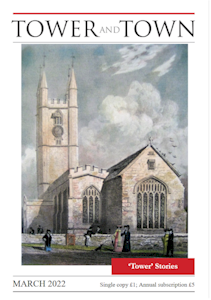

Tower and Town, March 2022 (view the full edition) (view the full edition)Marlborough College ChapelThe College was founded in 1843 as a school for the sons of Anglican clergy, and for the first five years of its existence it gathered to worship in St Peter's Church. Numbers grew and it was decided that a private chapel should be built. In the 1840s very few schools had private chapels. Vicars were suspicious about other places of worship within their parish, and in an age when there were fears about the intrusion of Roman Catholicism and Nonconformity, private chapels were regarded as potentially dangerous influences. It was the example of Thomas Arnold at Rugby (headmaster 1828-42) which made the great difference to the way school chapels were thought of. He showed that if a chapel was made central to the life of a school, its spiritual and moral life could be transformed, and 'godliness and good learning' would underpin the life of the whole community. In the wake of his example, other headmasters began to use chapels to steer their schools, and at Marlborough the arrival of George Cotton from Rugby resulted in a radical transformation. The College was in chaos after the great rebellion of 1851. Cotton realised that the way to control the turbulent community was by introducing organised school sport, and to extol the virtues of athleticism from the pulpit: muscular Christianity was born together with a new educational ethos. Between 1884-6 a splendid new chapel was built to designs by the great gothic revival architect, George Frederick Bodley, to accommodate this new purpose. At the beginning of the twentieth century Marlborough shocked the public school world with the appointment of Frank Fletcher as master. He was not ordained and was described in the press as 'the first lay apple in the clerical dumpling'. The Bishop of Salisbury was concerned but he felt that since sermons in the vast space were generally inaudable, he could not do too much damage! Chaplains became increasingly important in the organisation of worship as the number of ordained teachers diminished. Although the ecclesiastical nature of the College may have become less pronounced, the power of the building continues to make a great impact on the College community and all those who visit it. John Betjeman immortalised the building in his autobiographical Summoned by Bells, describing how he felt safe in Bodley's greens and browns. To these colours were added the gold, blue and 'crushed strawberry', chosen by the great ecclesiastical decorator and architect Sir Ninian Comper when he refurbished the apse shortly after the end of the Second War. Niall Hamilton |